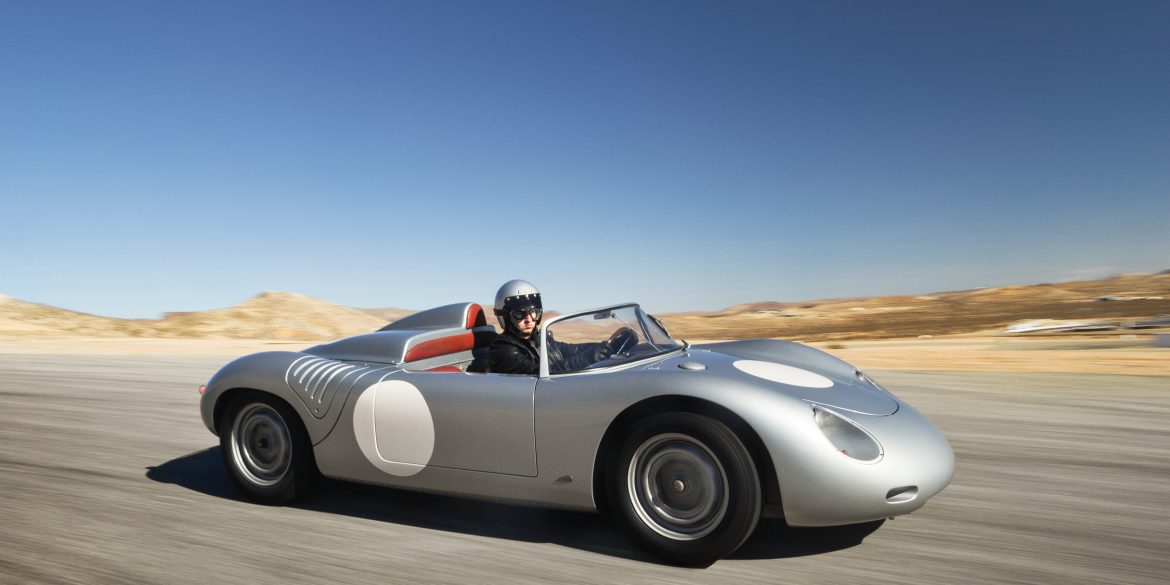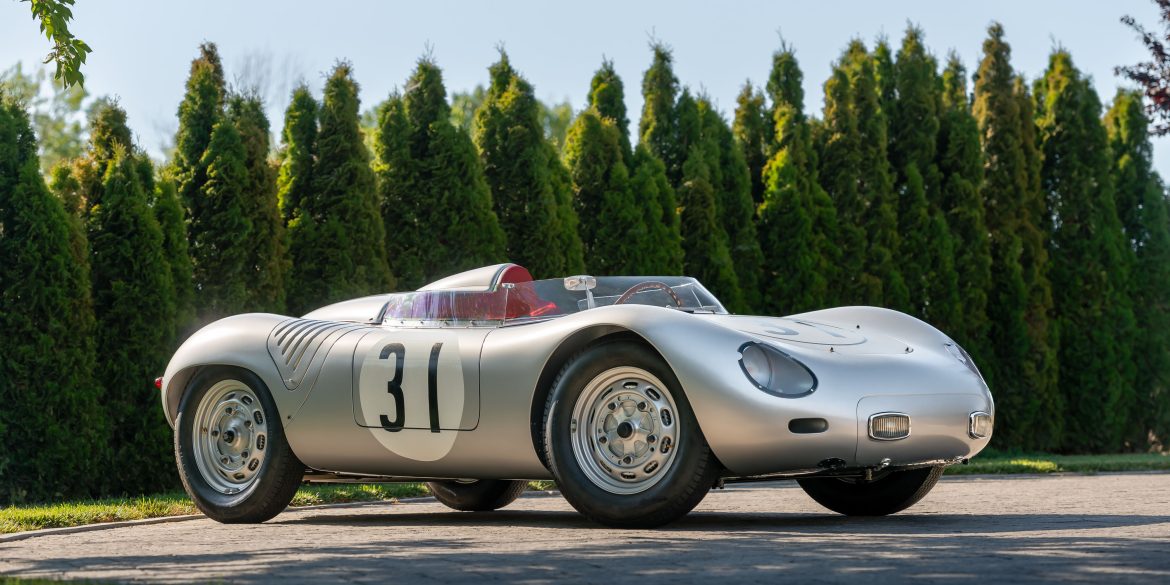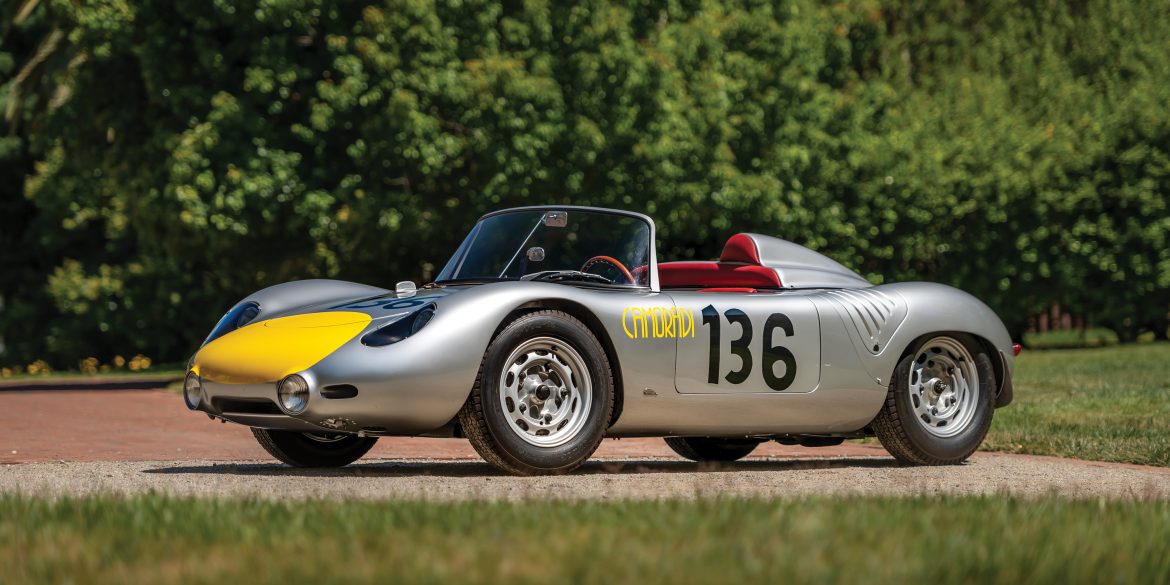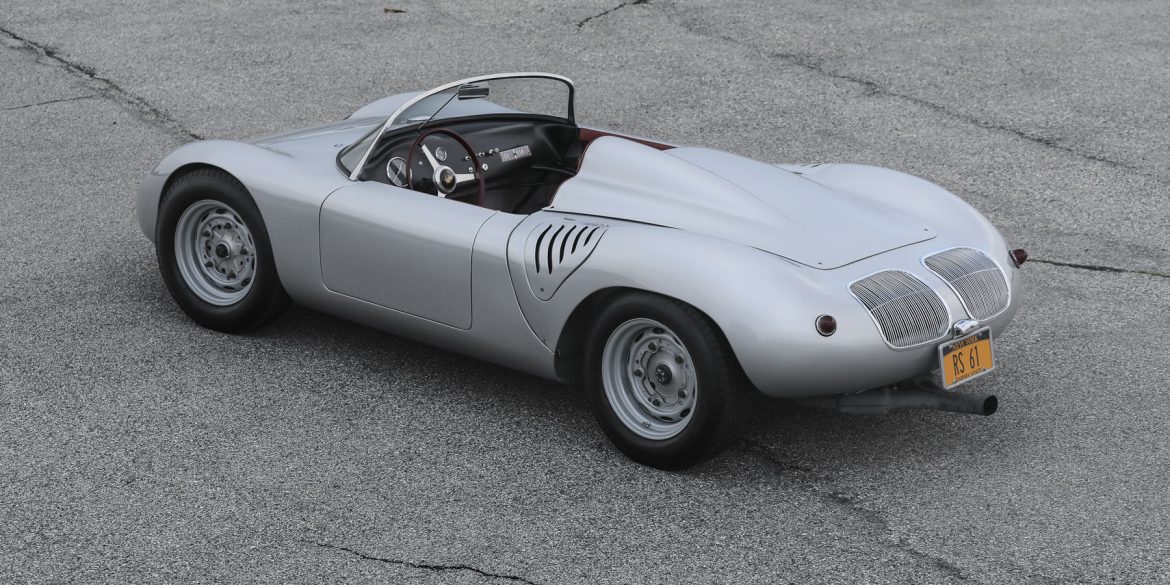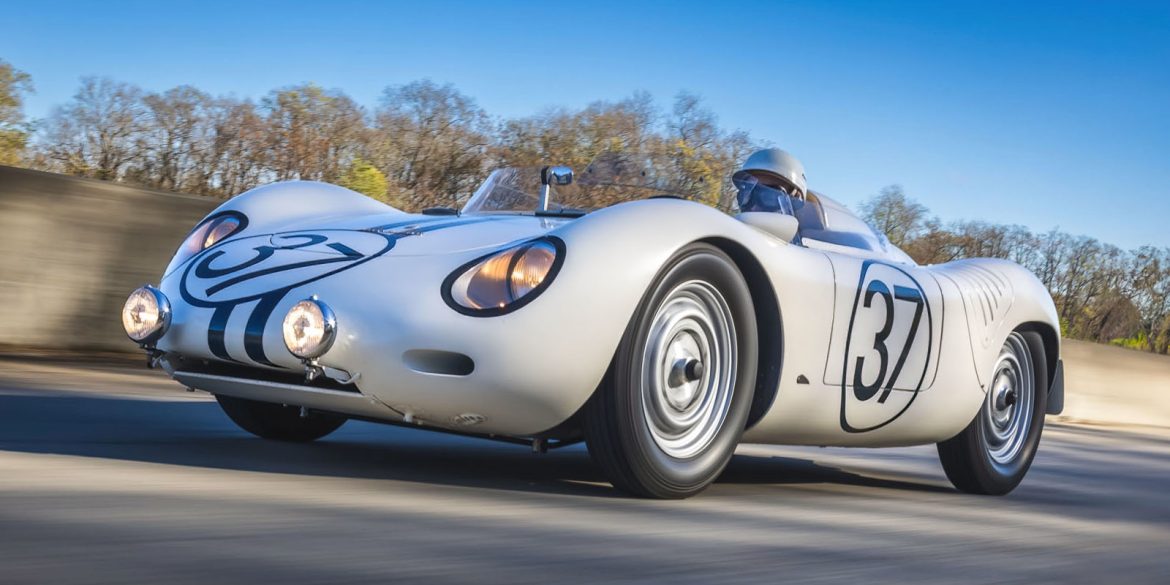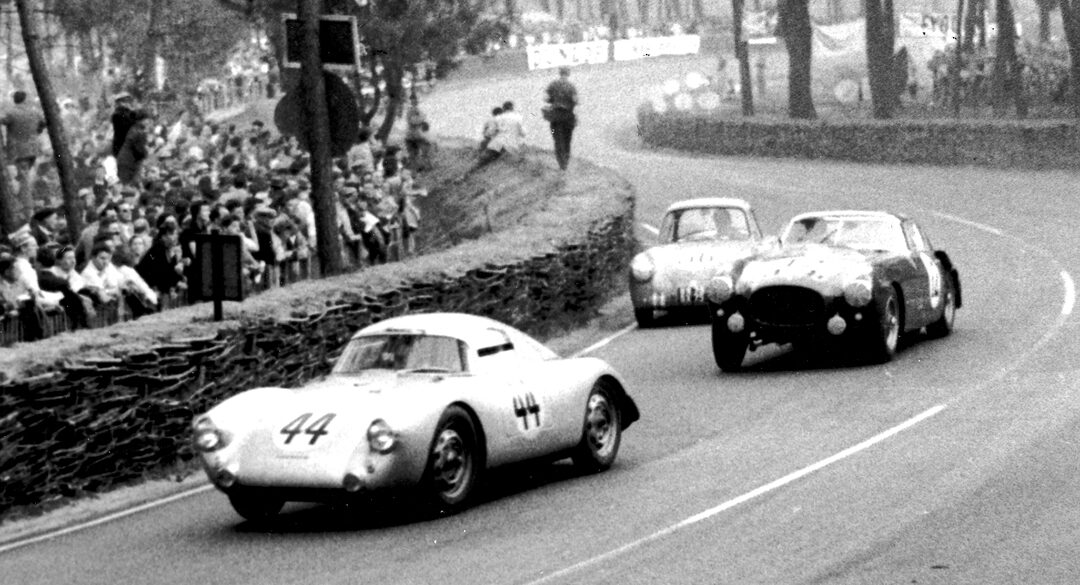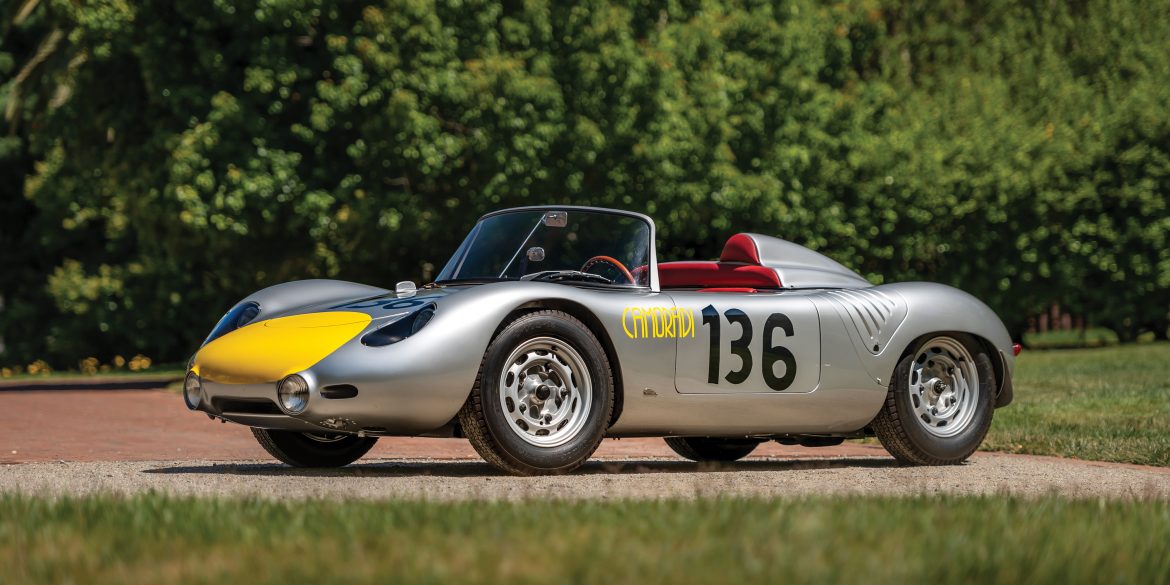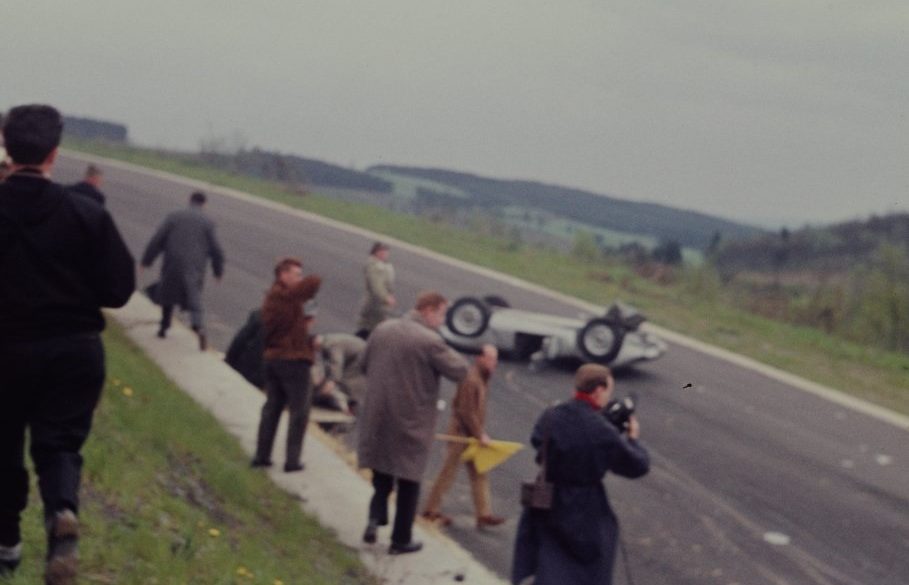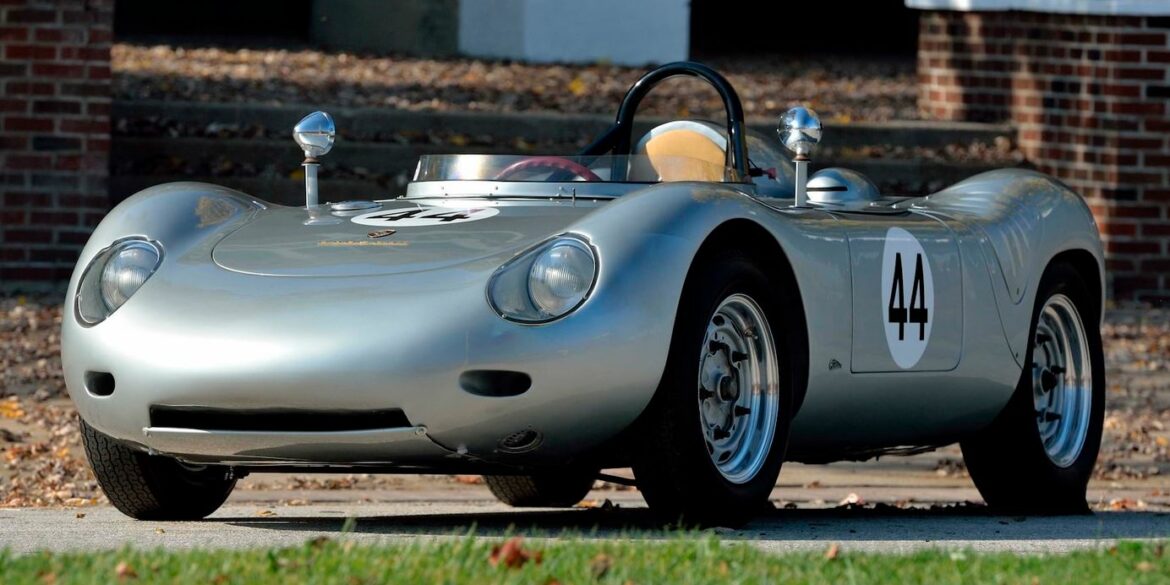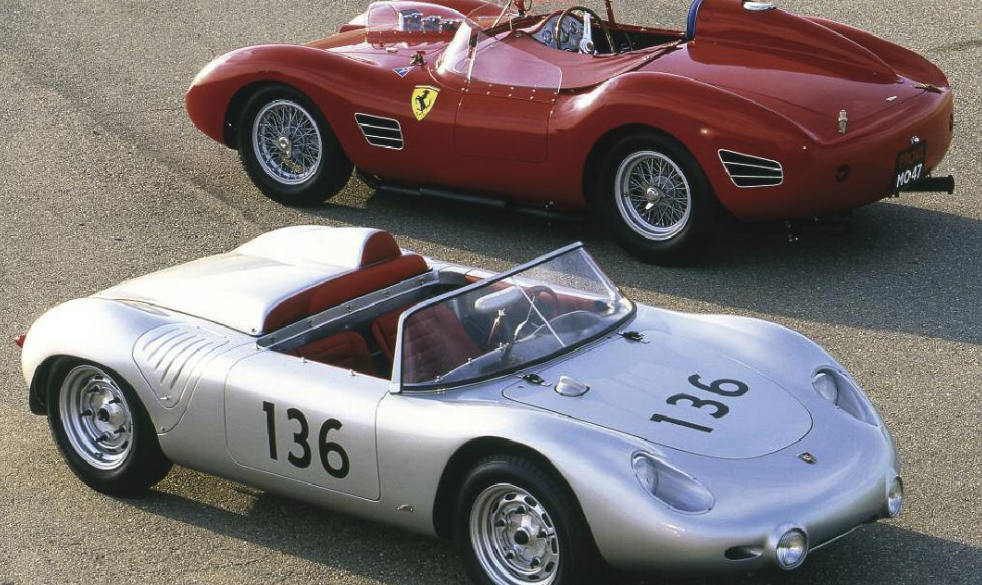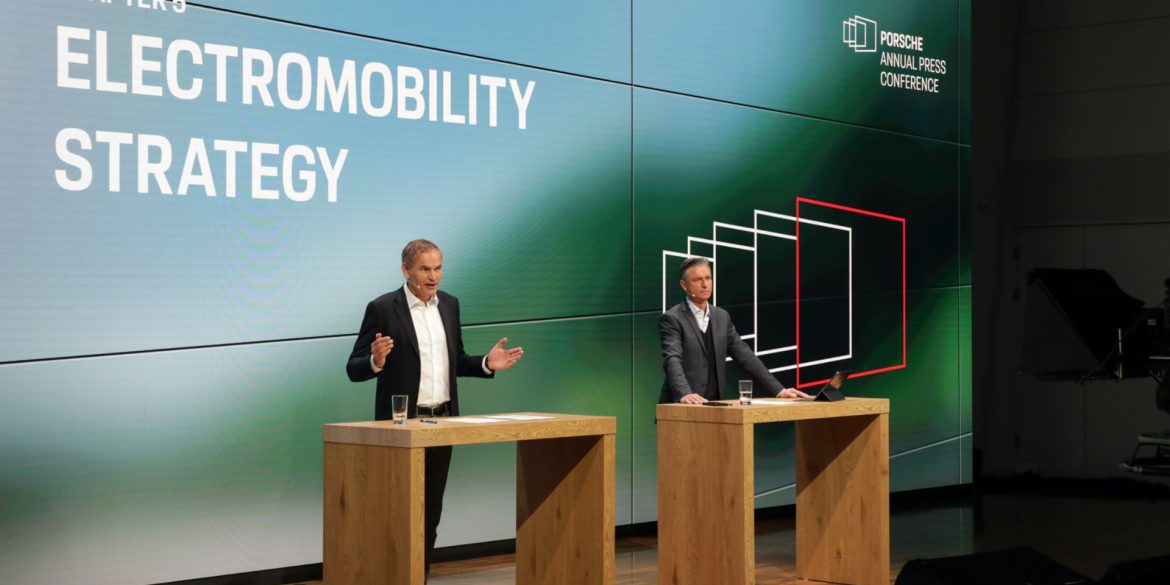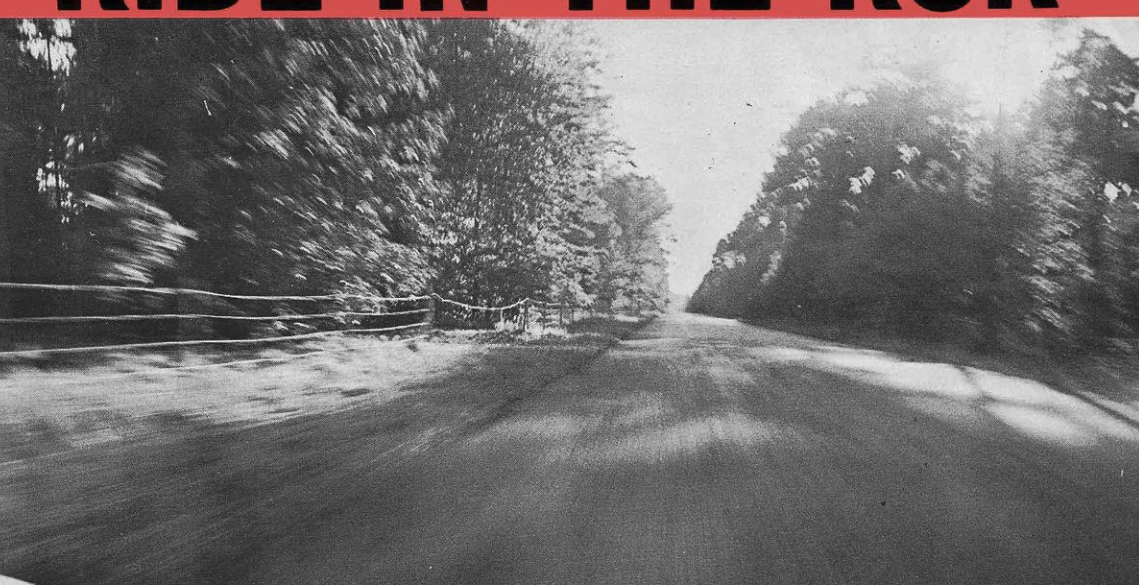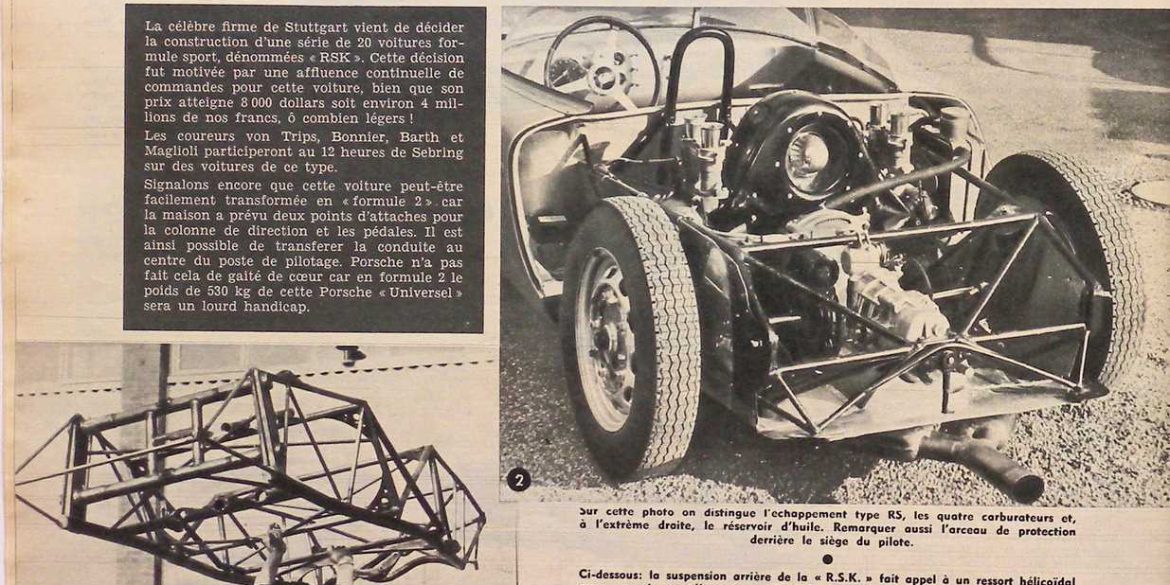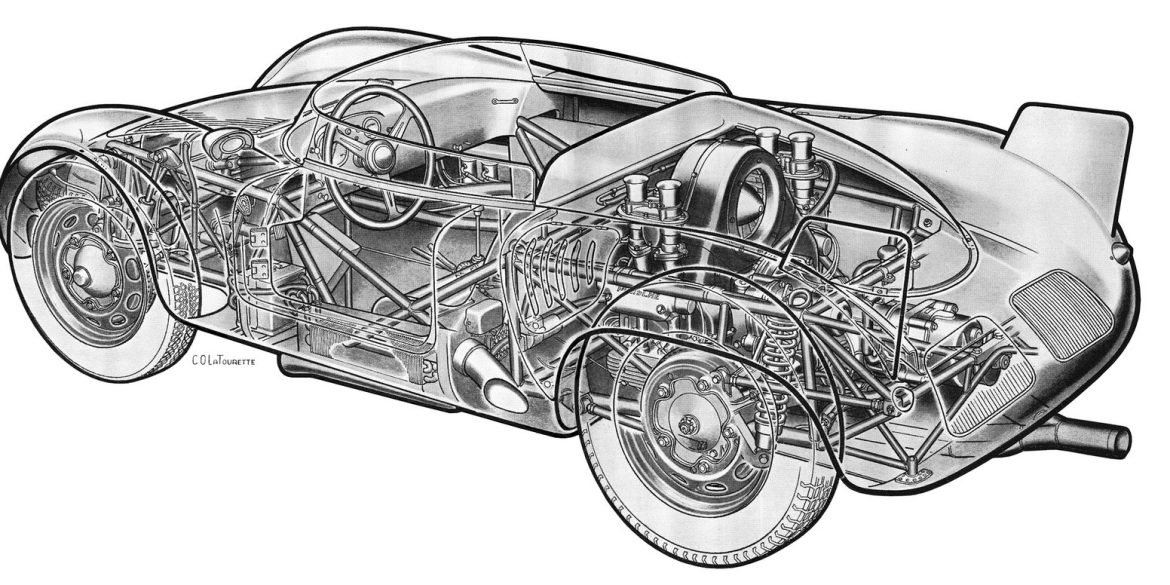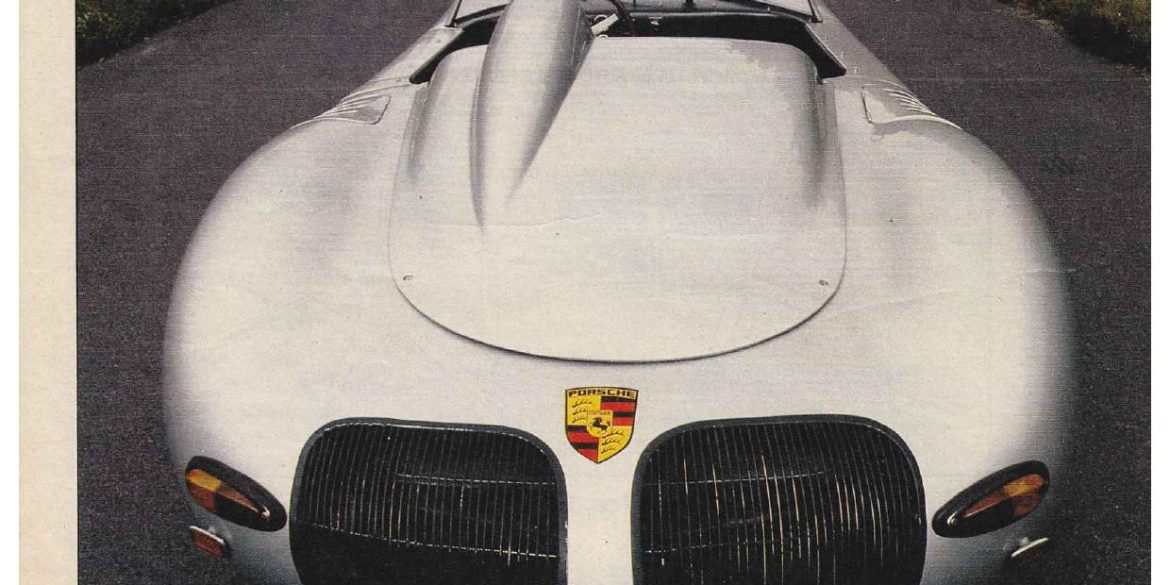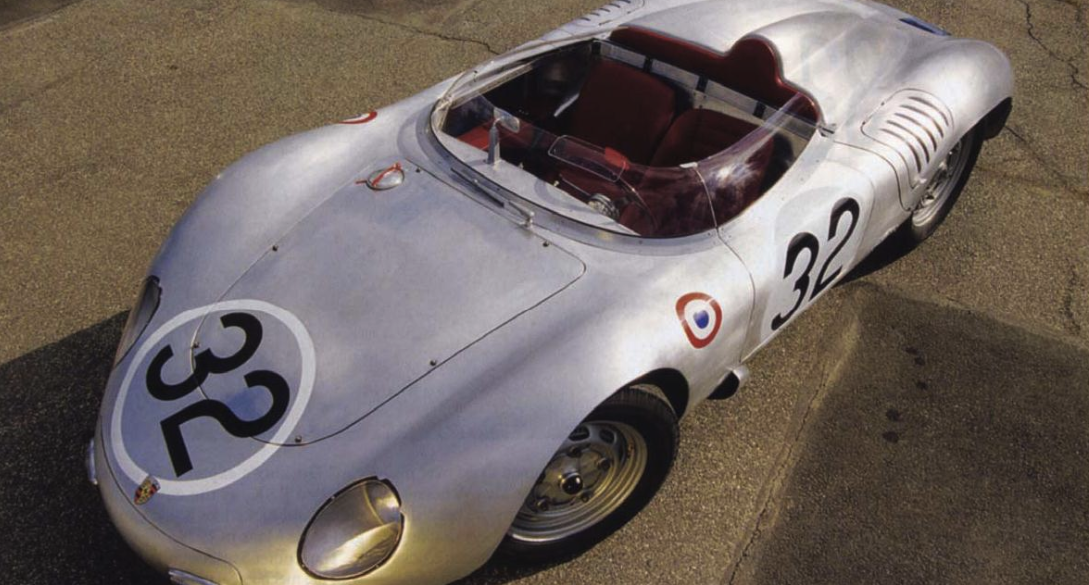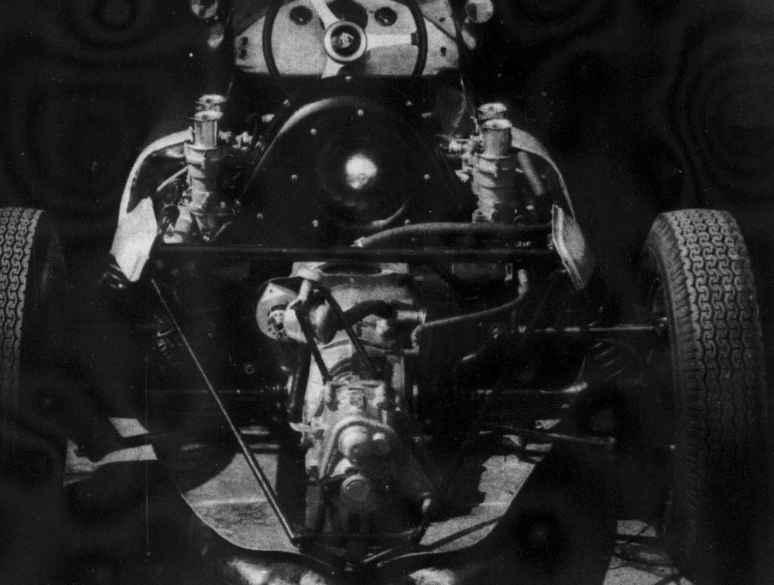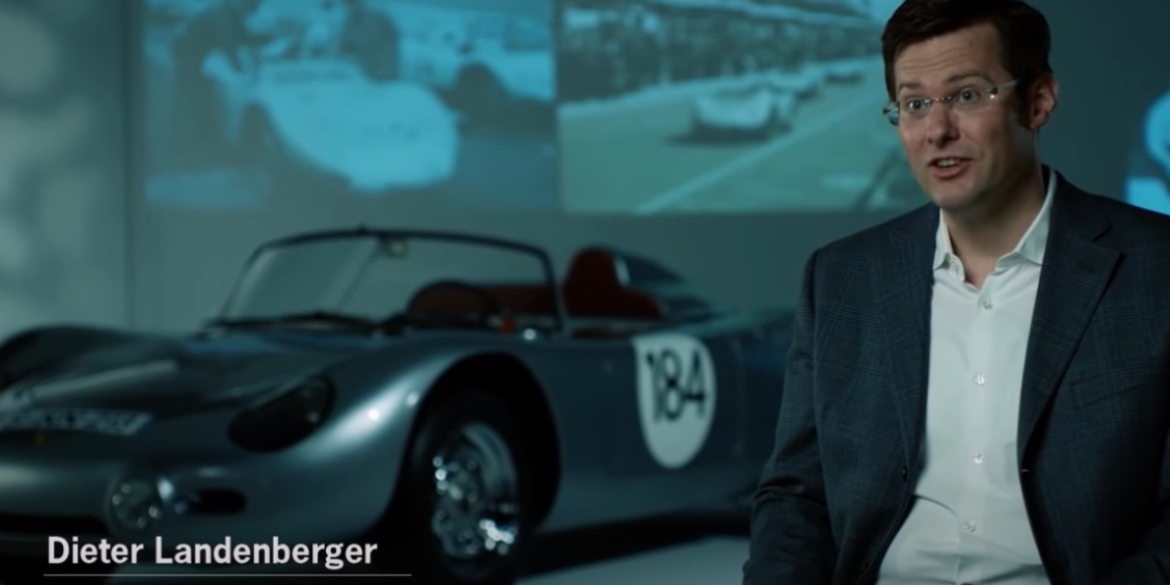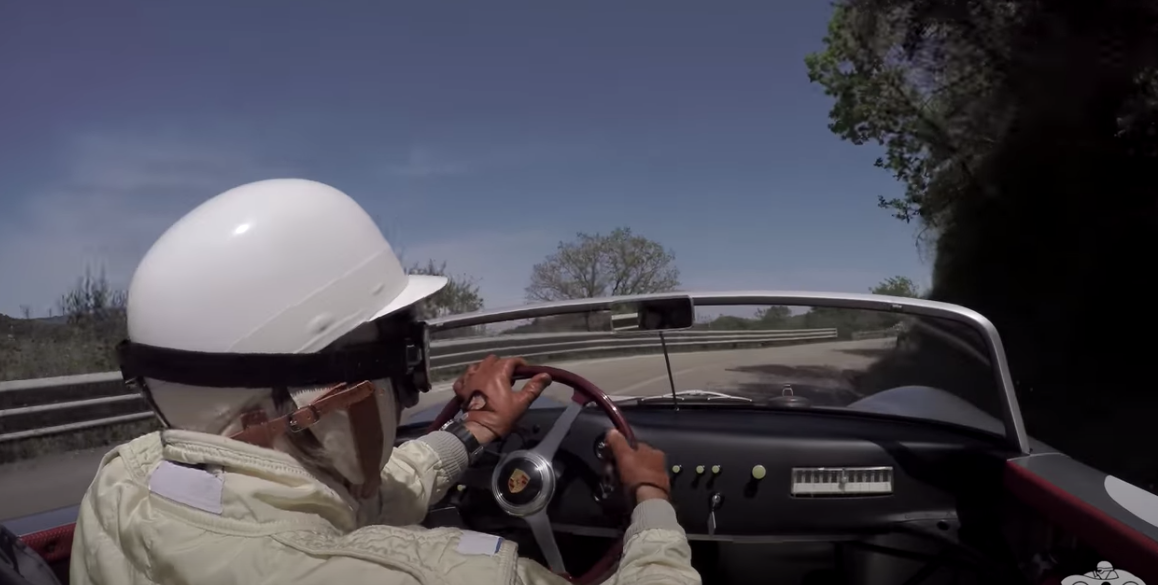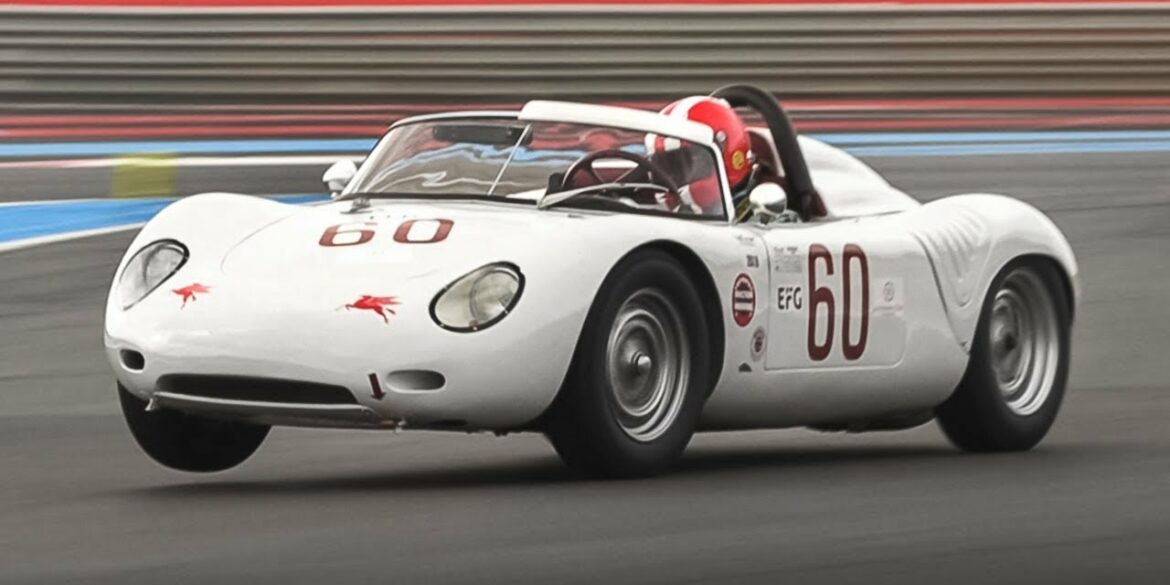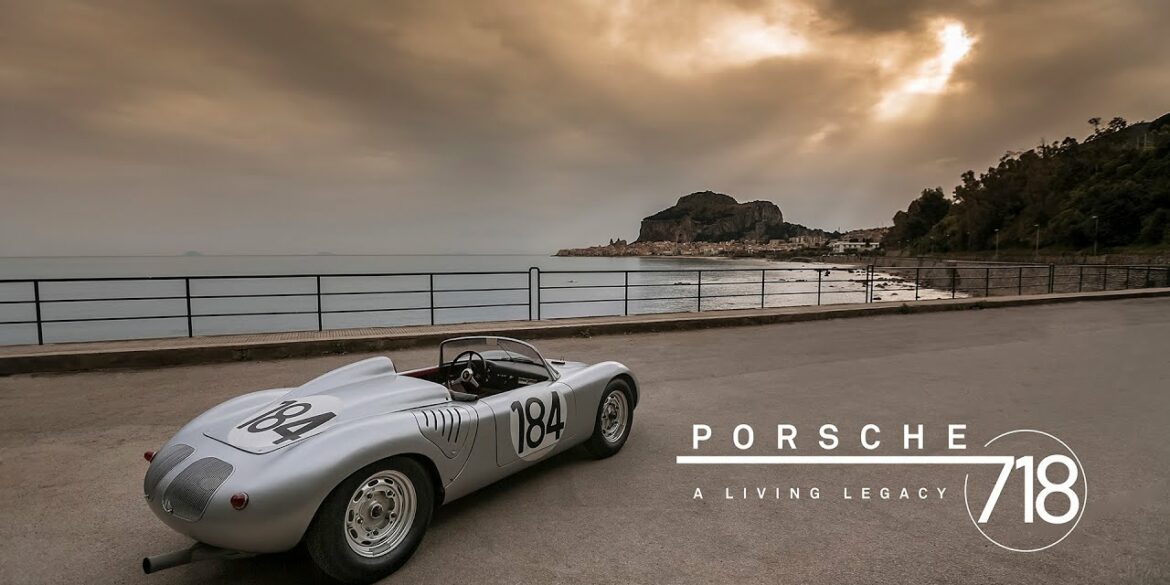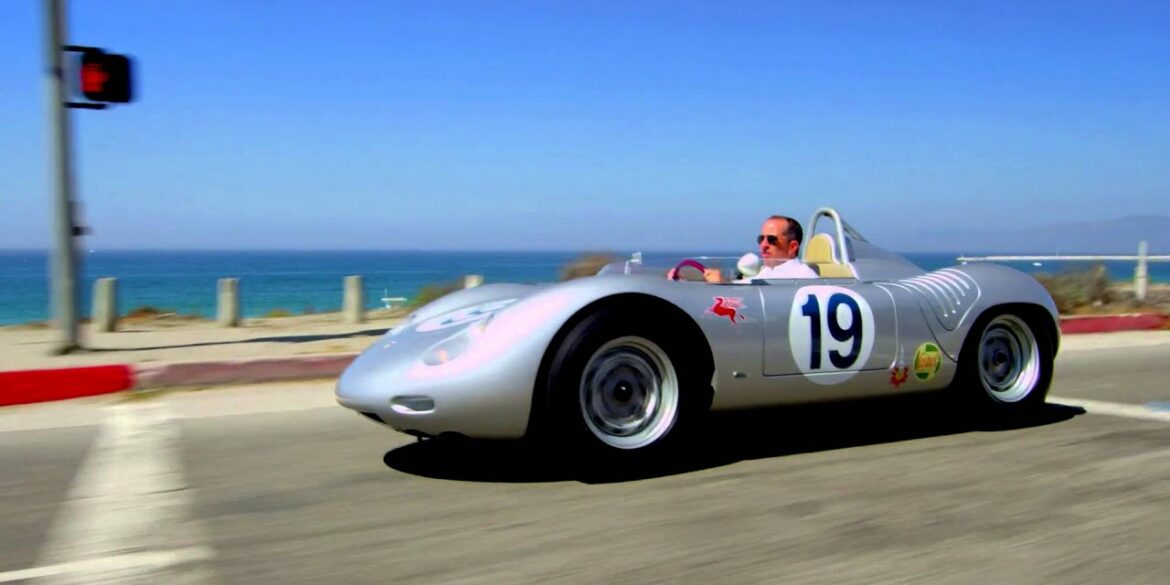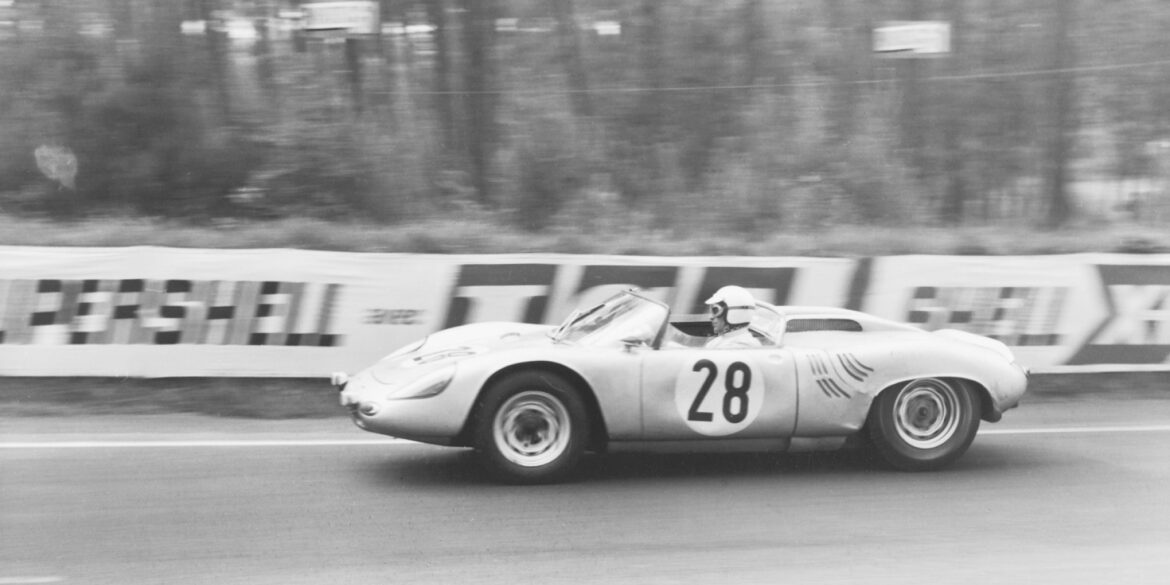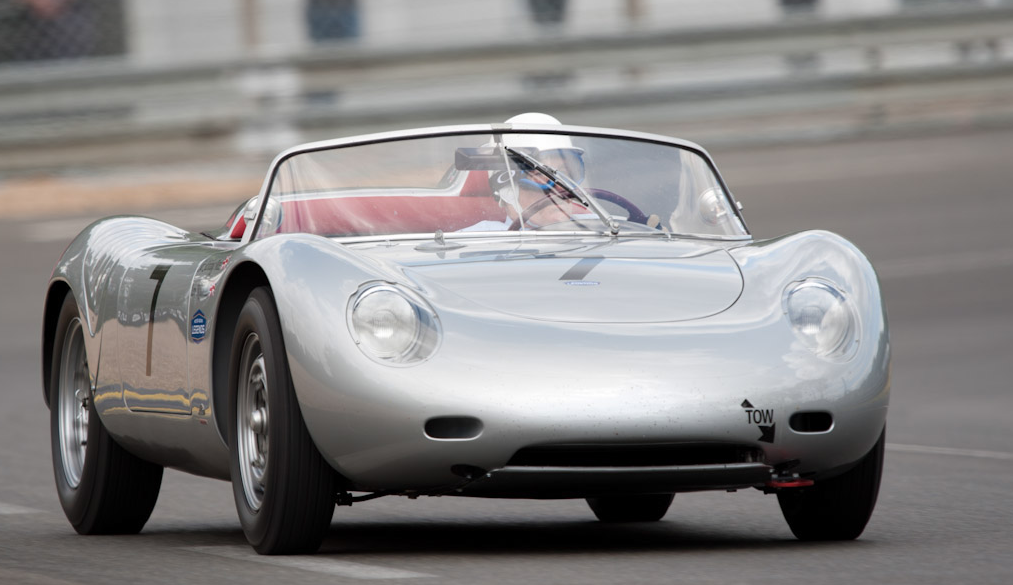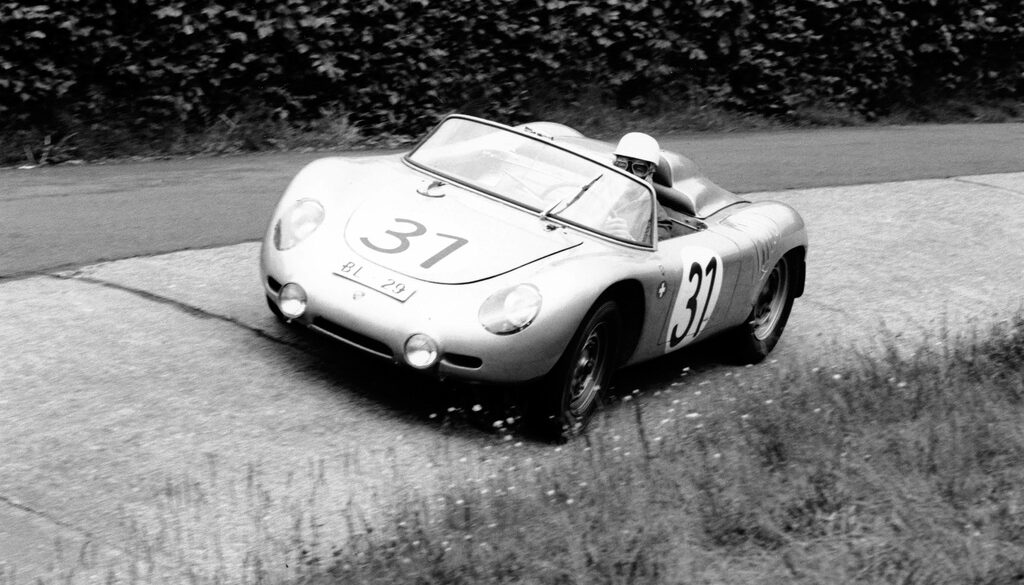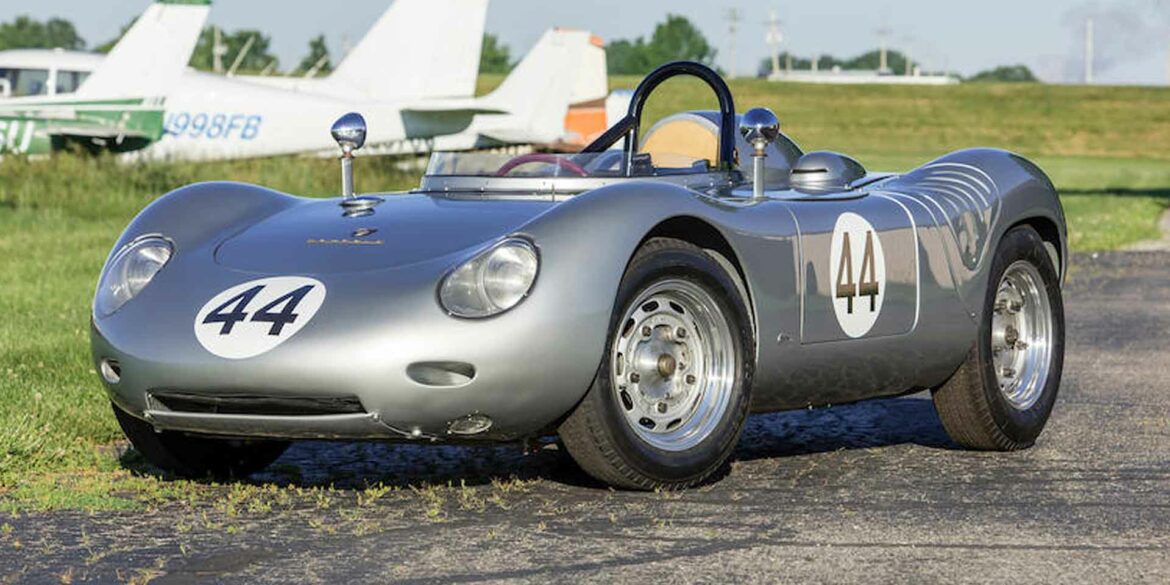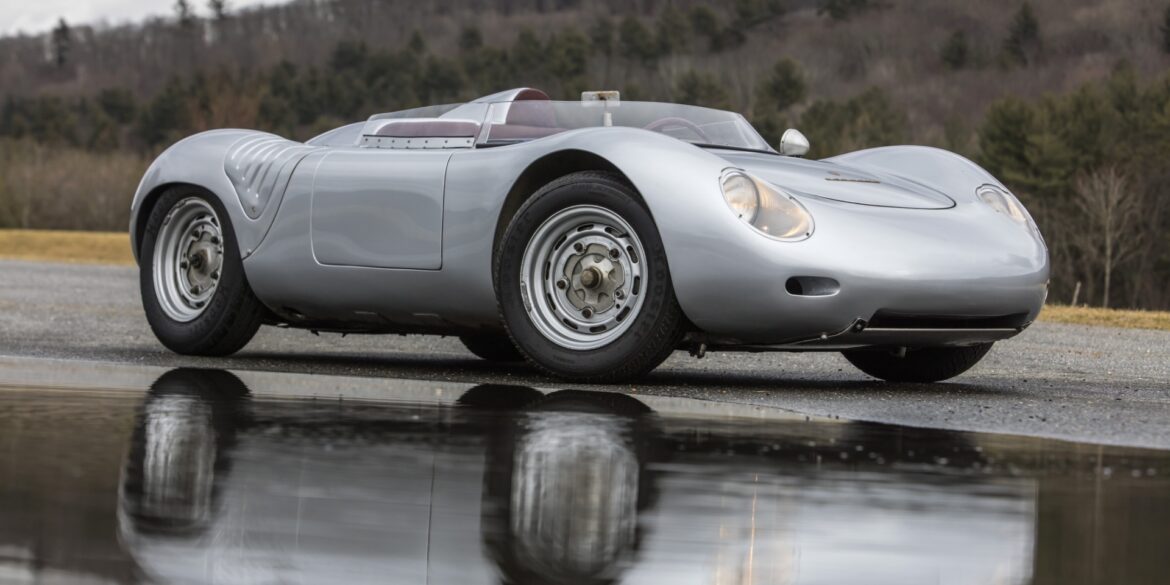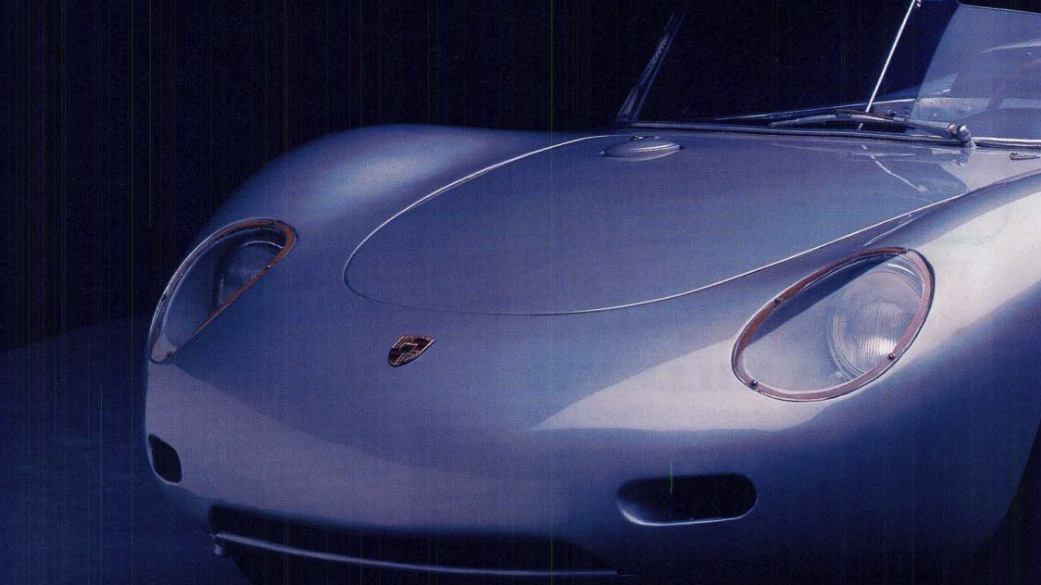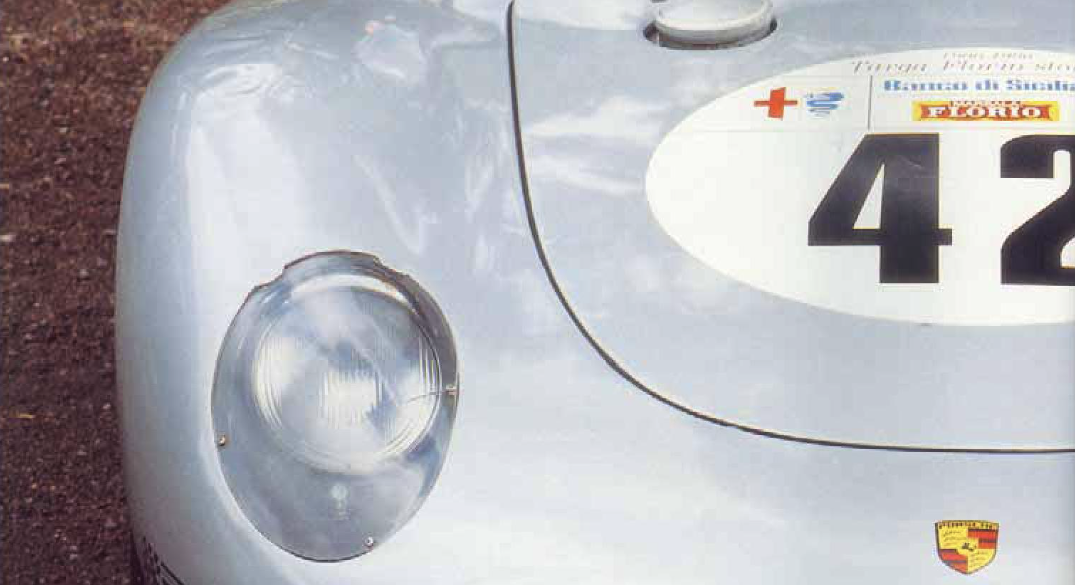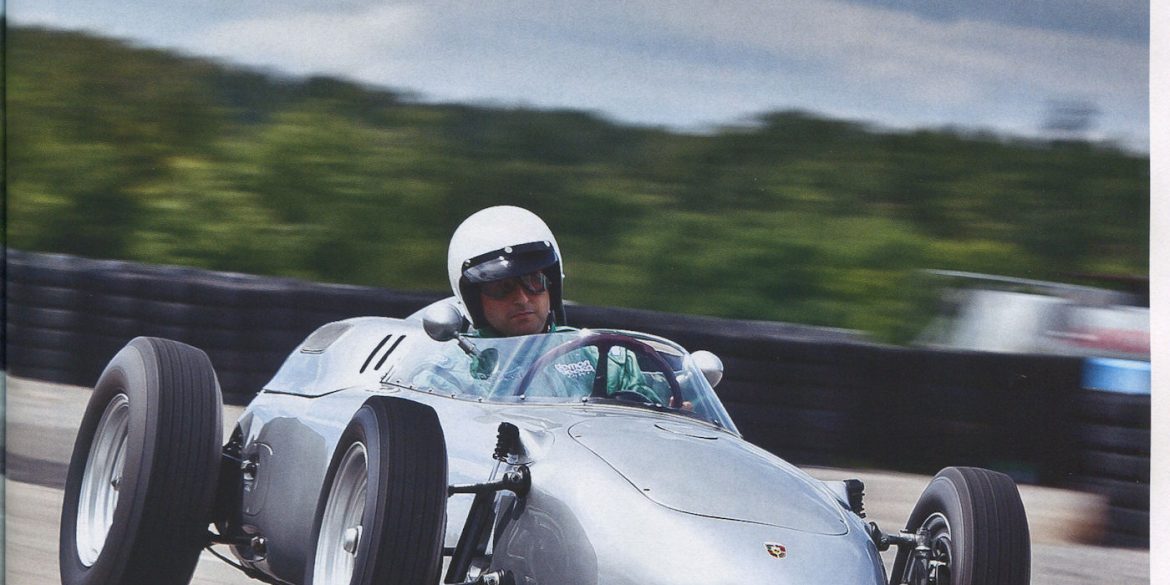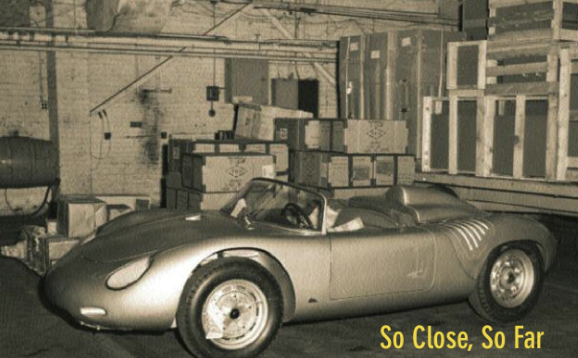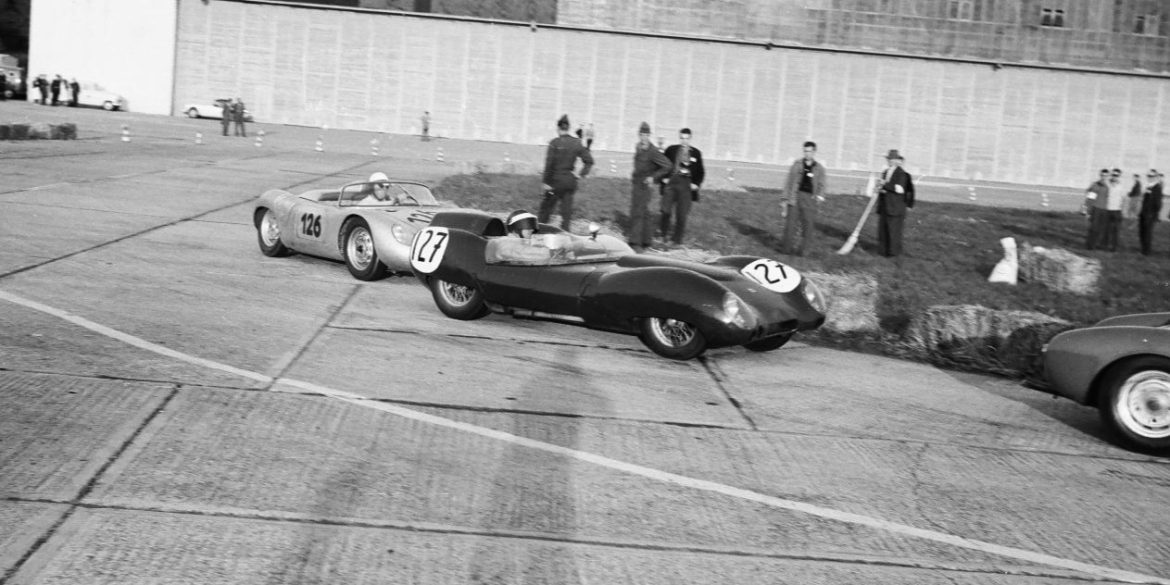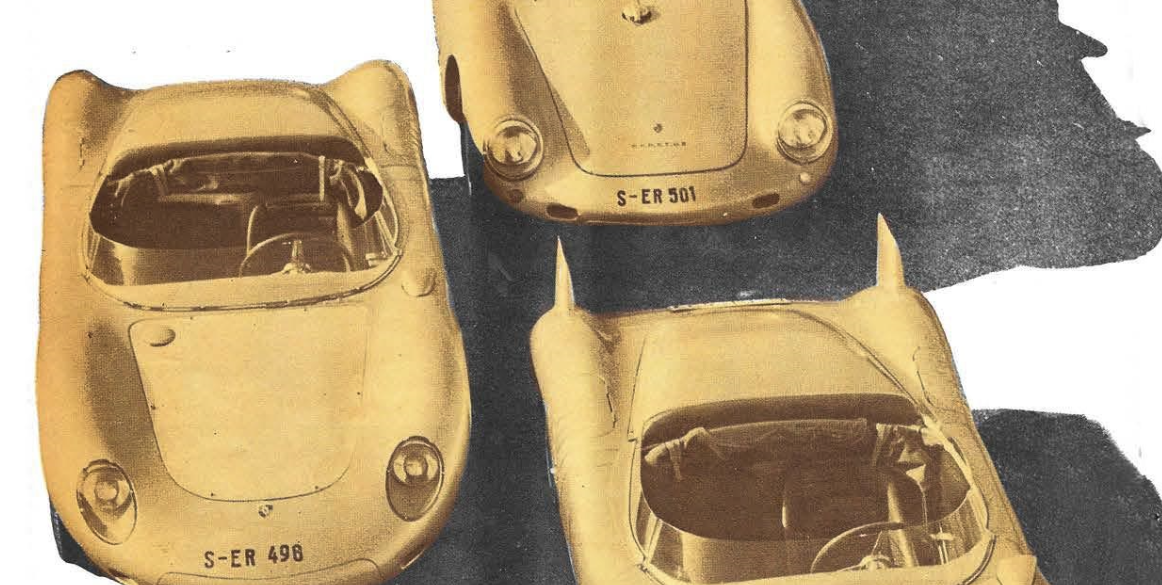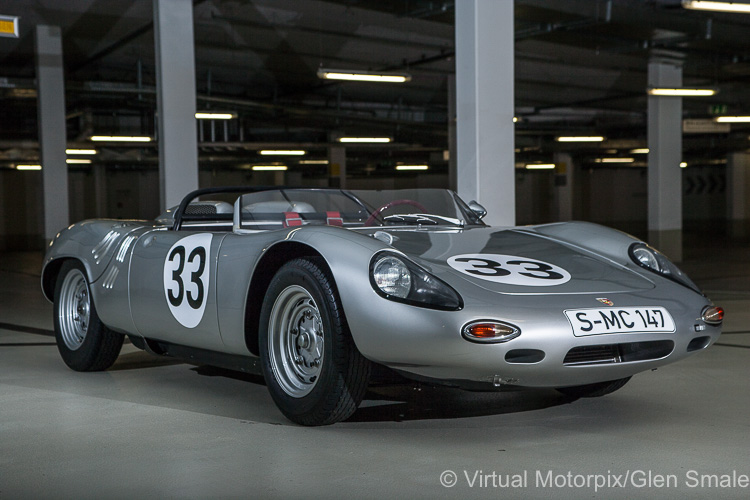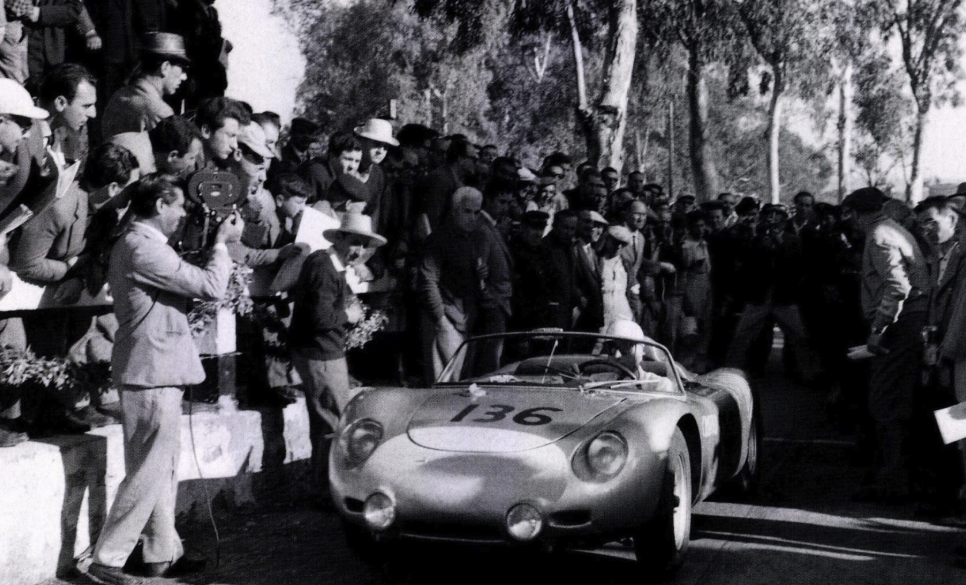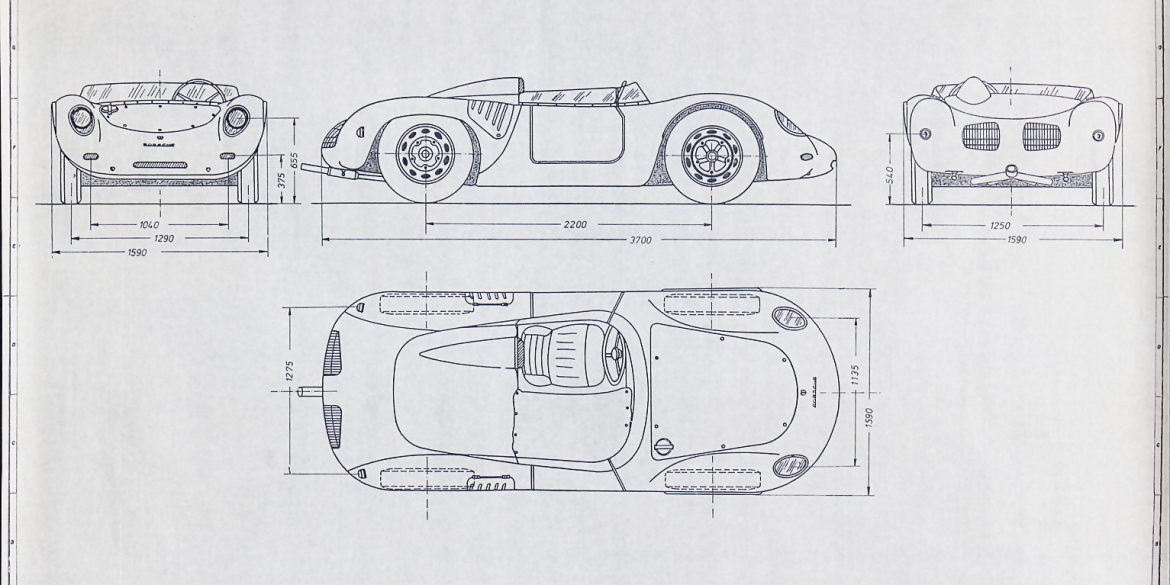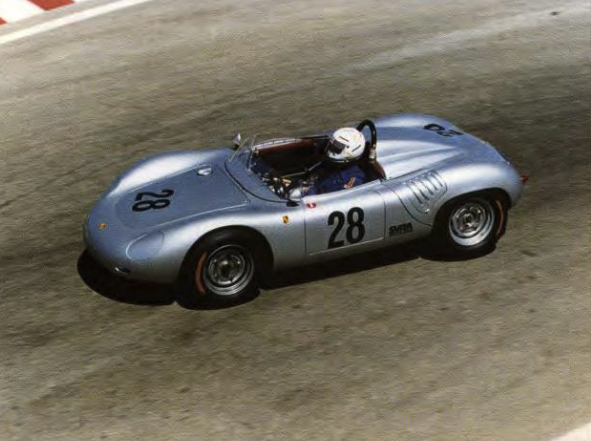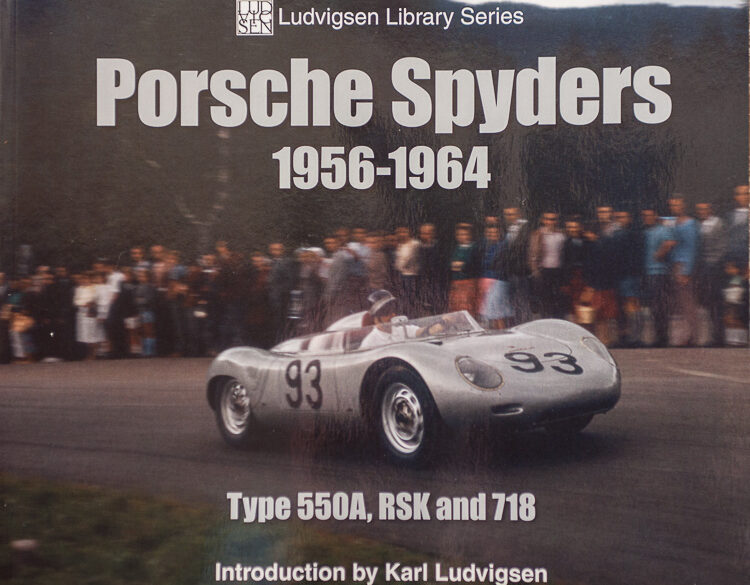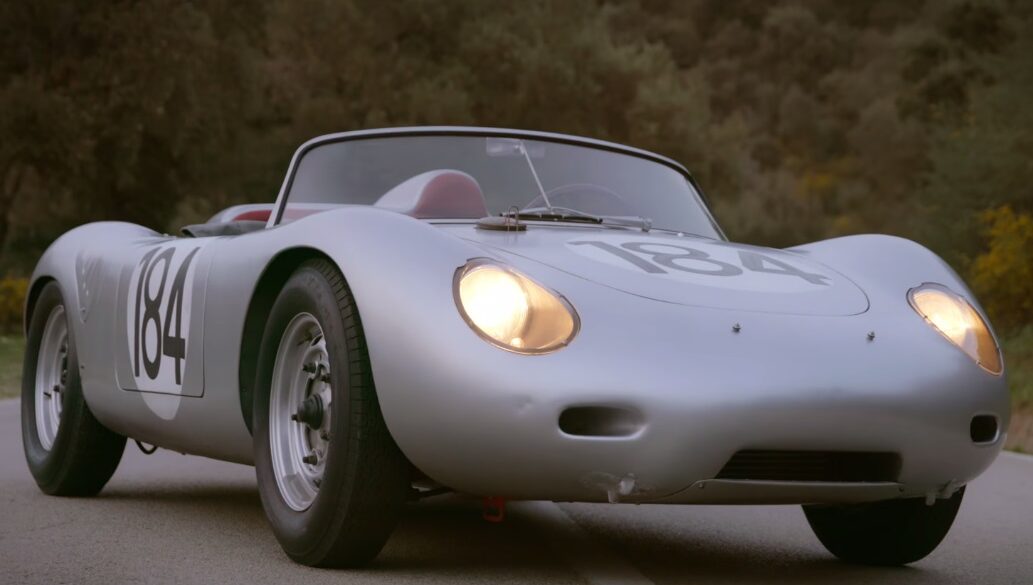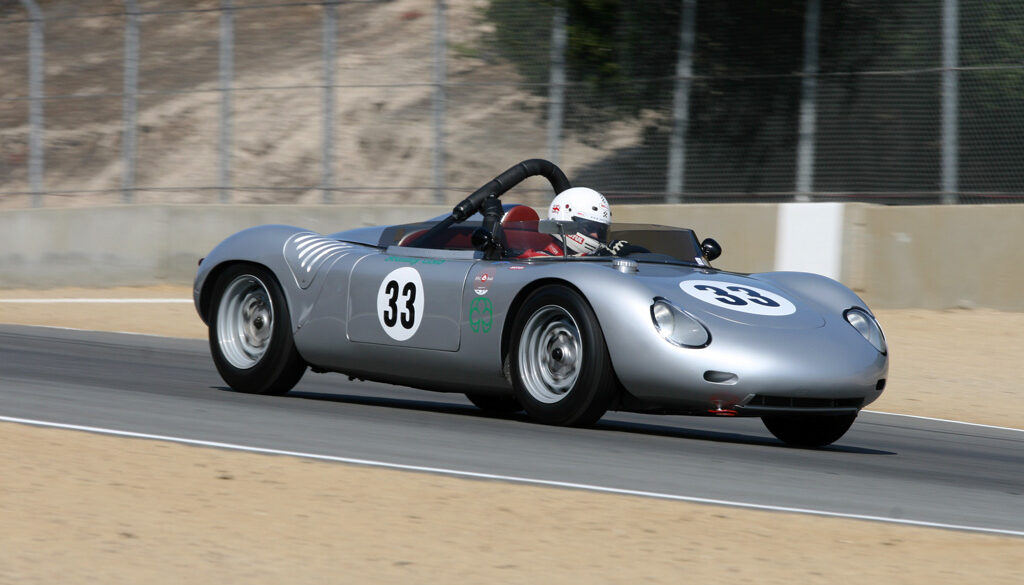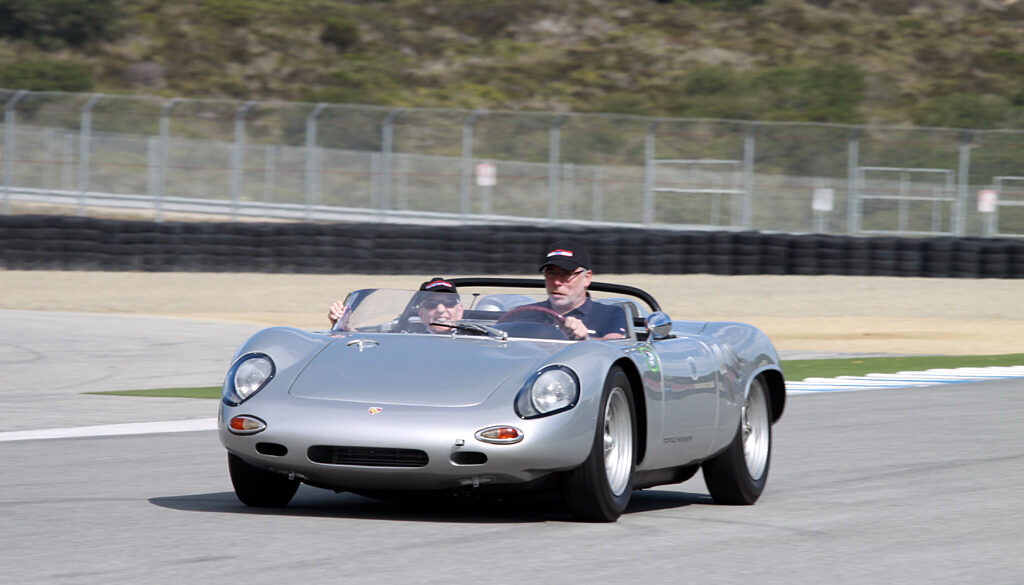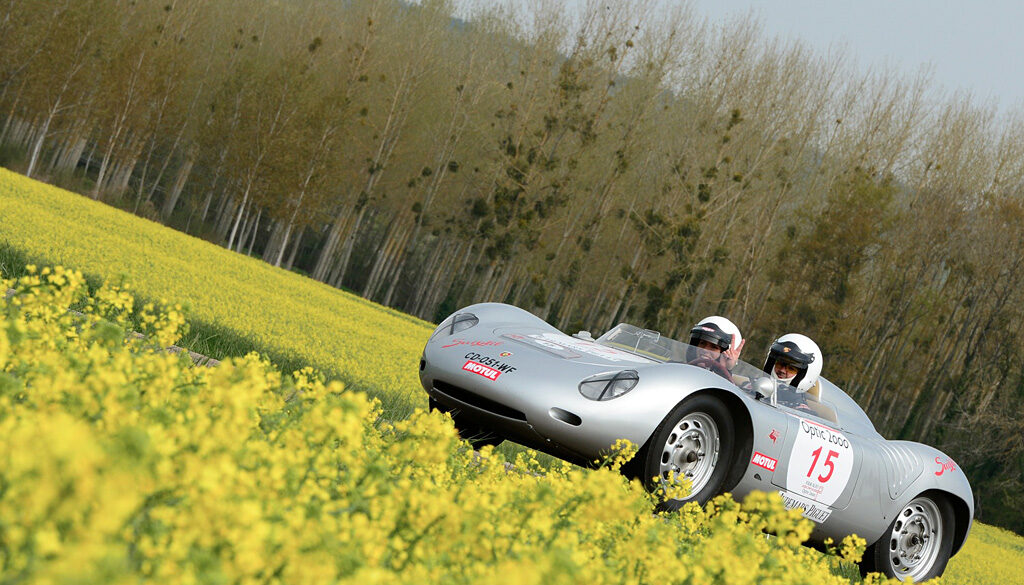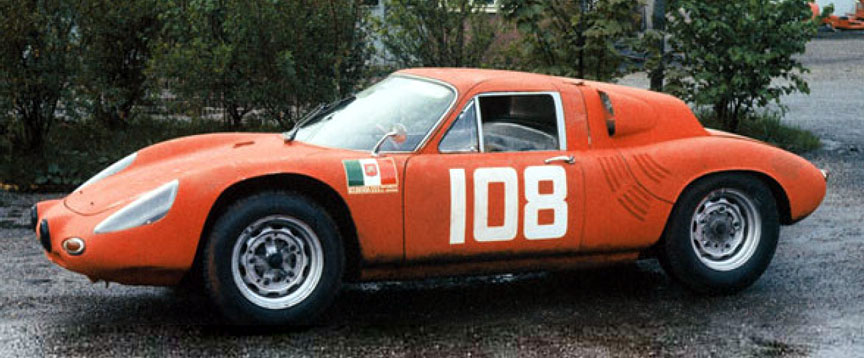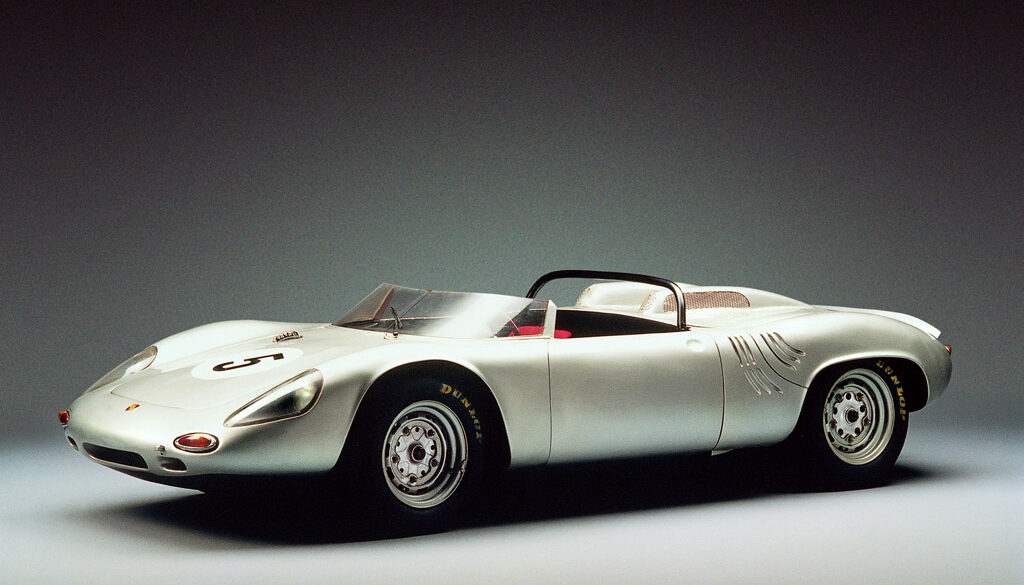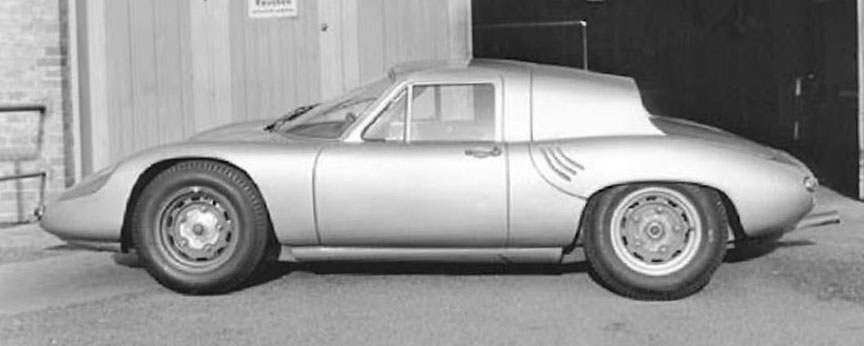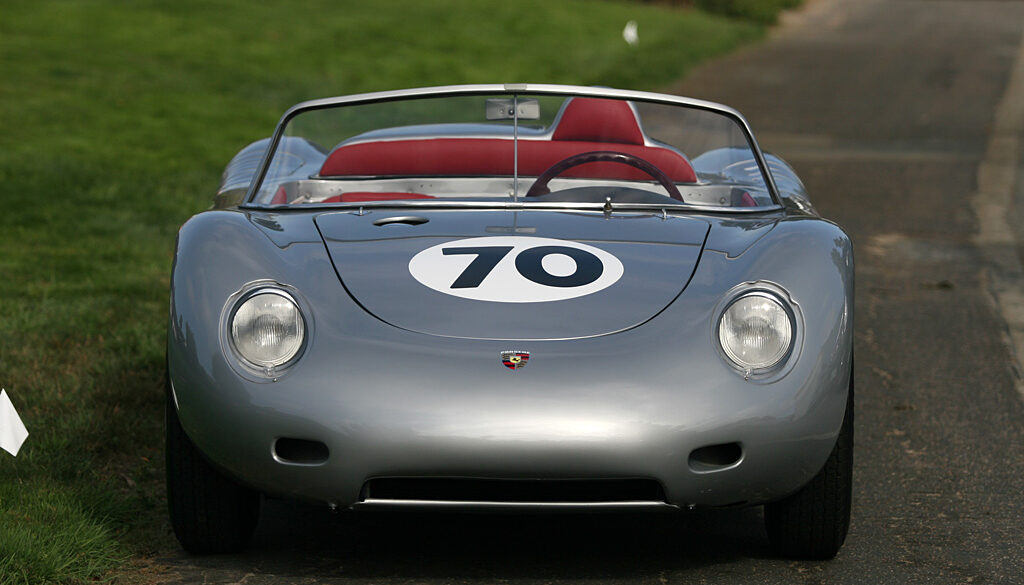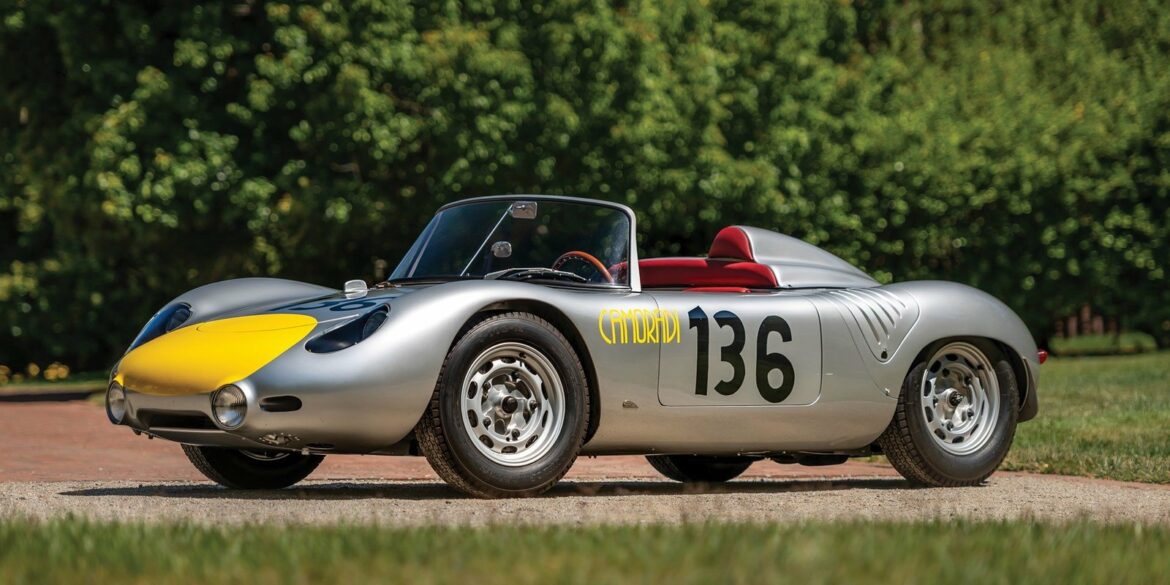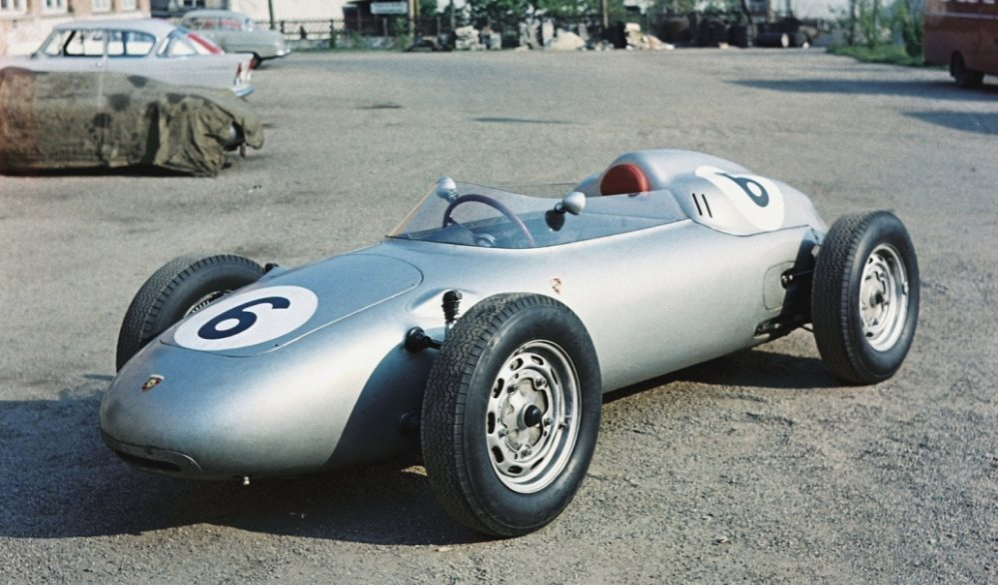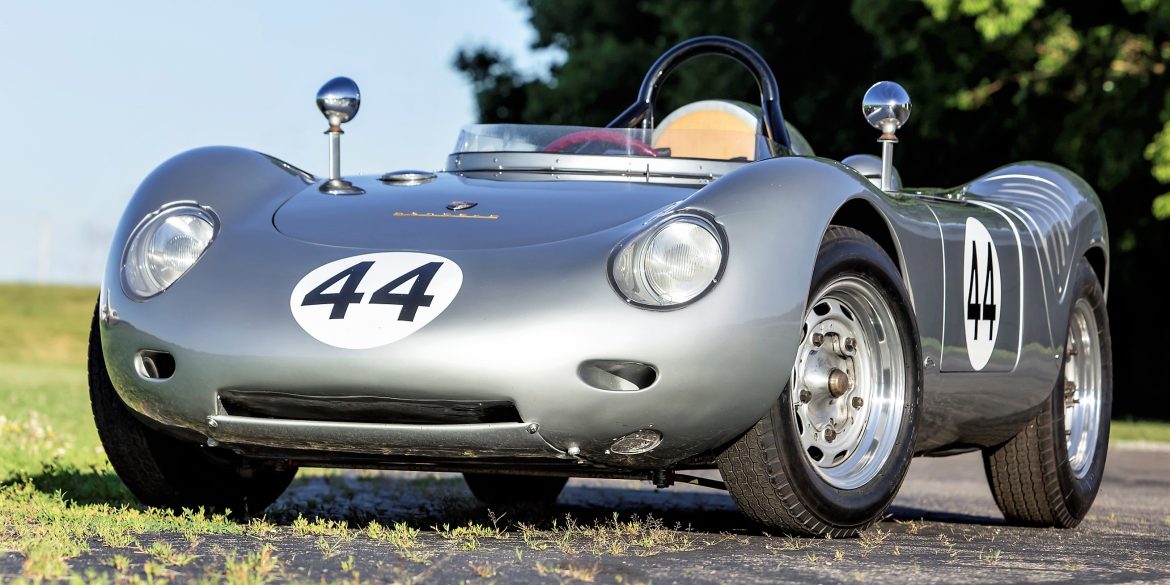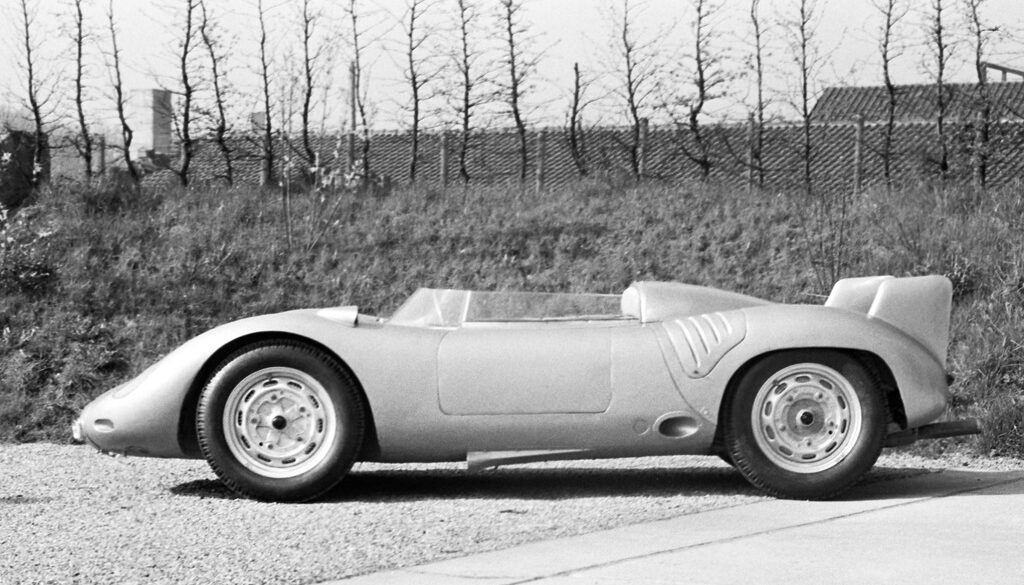The 1961 Porsche RS was one of the last Spyders made by Porsche that used the potent 4-cam engine. It was a successor to the 1960 RS60 which was a highly developed version of the original 550 RS Spyder. These diminutive racecars excelled on the tighter courses like the Targa Florio which was...
Porsche 718
Built for circuit track, road and hill climb racing, the Porsche factory team and numerous customers successfully used the 718 race sports cars from 1953 to the mid-1960s. Famous racers like Wolfgang Graf Berghe von Trips, Hans Herrmann, Graham Hill, Ricardo Rodriguez and Joakim Bonnier brought home more than 1,000 race victories with the fast and agile Porsche race cars. They really caused a sensation in motorsport thanks to their small four-cylinder flat engines which won races overall against a competition that had superior engine power (but were heavier cars). See all of our Porsche 718 Research.
The successor to the 550 A made its debut in 1957 as the 718 RSK. Motorsport and technology were closely intertwined in its name. While the “RS” stands for “race sport”, the “K” referred to the newly developed front torsion bar springs. They were arranged in the form of a...
Despite being made for the small engine displacement classes, Porsche nearly won the 1960 Manufacturers Championship with the RS 60. These purposeful racers featured 1.5, 1.6 or 1.7 liter engines in a low and lightweight chassis. They always won the 1.6 liter class, but typically raced in and among the...
Along came a Spyder Unveiled in January 1960, the RS60 represents the ultimate evolution of Porsche’s aluminum-bodied, four-cam Spyder – an iconic series of sports racing cars originating with the Type 550 in 1953. The RS60 was, in essence, a refined version of the highly successful works RSK built for...
Regarding 1950s Porsche Spyders, the sheer number of podium finishes reveal a tale of one the greatest sports cars ever built. Considered by many to be the most beautiful of all the Spyder variants, the Type 718 RSK won its class at the 12 Hours of Sebring, the 24 Hours...
Porsche’s Spyders stole the limelight, but in the 1950s they had serious rivals in both BMW and EMW, who produced serious 1½-liter machinery. Their battles on both sides of the Iron Curtain were the stuff of legend. A liter and a half—more or less a quart and a half—isn’t much...
Despite being made for the small engine displacement classes, Porsche nearly won the 1960 Manufacturers Championship with the RS 60. These purposeful racers featured 1.5, 1.6 or 1.7 liter engines in a low and lightweight chassis. They always won the 1.6 liter class, but typically raced in and among the...
On May 3, 1959, Christian «Bino» Heinz started at GP Spa, in his Porsche 718 RSK under number 20. On one of the first laps, at the apex of the well-known Eau Rouge turn, the pilot lost control of the rear axle of his car…...
Mecum Auctions’ Kissimmee 2023 is right around the corner and one of the main features is a 1959 Porsche 718 RSK Center Seat from the Rick Grant III Estate Collection. Kissimmee 2023 will be held from January 4-15, 2023 at the Osceola Heritage Park in Kissimmee, Florida. 1959 Porsche 718...
In a recent Porsche Annual Press Conference, Porsche AG Chairman of the Executive Board Oliver Blume made a few very interesting revelations. He talked about the plan that the company has laid out for themselves until 2030. During the same event, they happily announced that clients fully embraced the company’s...
Porsche 718 History Video The 718 was a development of the successful Porsche 550A with improvements being made to the body work and suspension. The car is a RennSport build with a wheelbase shorter (German ‘Kurz’) than typical of predecessors of the era and this led to the car being...
The Porsche 718 from the driver’s seat From the folks at Petrolicious: “We’ve been blown away by the positive response to our film featuring the 1960 Targio Florio-winning Porsche 718 RS 60 being driven tastefully by Derek Bell. But’s time to come clean, however: we’ve been holding a little bit...
Porsche 718 RS 60 Spyder in action at Monza Watch this gorgeous Porsche 718 RS 60 Spyder from 1960 in action at Monza and Circuit Paul Ricard racing in the ‘Greatest Trophy’ championship of the Peter Auto events. The 718 in this video is chassis 718-067 and it’s powered by a...
Porsche 718: A Living Legacy Once you get it on song, get up to 7,000-plus-revs, it was absolutely amazing – Derek Bell ...
Jerry Seinfeld and his 1959 Porsche 718 RSK Marvel at the power and pure joy as Jerry Seinfeld navigates the streets of Los Angeles in a car that took the racing world by storm – The 1959 Porsche 718 RSK. This aluminum beauty will be proudly offered at our Amelia...
No Subscription? You’re missing out Get immediate ad-free access to all our premium content. Get Started Already a Member? Sign in to your account here....
No Subscription? You’re missing out Get immediate ad-free access to all our premium content. Get Started Already a Member? Sign in to your account here....
No Subscription? You’re missing out Get immediate ad-free access to all our premium content. Get Started Already a Member? Sign in to your account here....
The Porsche 718 Story & History Porsche 718 RSK / RS 60 / RS 61 / RS 62 Spyder (1957-1962) Key Accomplishments 250+ class victories and 600+ podium finishes European Hill Climb Champion 1958-1959-1960-1961 SCCA F Modified category champion 1959-1960-1961-1962 SCCA E Modified category champion 1960-1961-1962-1963 Targa Florio winner 1959-1960...
No Subscription? You’re missing out Get immediate ad-free access to all our premium content. Get Started Already a Member? Sign in to your account here....
Internationales Flugplatzrennen Klagenfurt, 1960 (Austria). Second stage Cup der Österreischen Flugplatzrennen der ÖASC. Joseph (Sepp) Greger (on the photo — behind the driver) in a fight with David Piper and his Lotus 15 (№127). Porsche, having lost control, flies off the track at high speed and crashes into the parked...
1961 Porsche 718 W-RS Spyder ‘Grossmutter’ (chassis #047) photographed at the Porsche Museum, May 2019 The word unique is a much-overused word today, as it is applied, it seems, to just about anything that is produced in small numbers, or even just to enhance a claim about something unusual. In...
No Subscription? You’re missing out Get immediate ad-free access to all our premium content. Get Started Already a Member? Sign in to your account here....
© Porsche Spyders 1956-1964: Type 550A, RSK and 718 With just 125 pages in total, this book is not a detailed narrative description of the Porsche Spyders between 1956-1964. But what it is, is a useful record of the Type 550A, RSK and 718 models, richly supported with period photography....
In this episode, we get to see a Porsche 718 living strong even after all these years as the story behind it is being told. “Once you get it on song, get up to 7,000-plus-revs, it was absolutely amazing,” says racing driver Derek Bell, “…and the fact you could brake so...
Porsche 718 RS61 Spyder Pictures Completely identical in specification to the RS 60, it raced alongside the W-RS which had a more extended nose....
Porsche 718 RS 60 Spyder Pictures Despite being officially classified as a Type 718, the RS 60 improved upon its direct predecessor mechanically while remaining visually similar. As you can see in the 718 RS60 pictures below, it has a wider cockpit and larger 15-inch wheels. You may not see...
Porsche 718/8 W-RS Spyder Pictures...
Porsche 718 RSK Spyder Pictures Not only is the 718 RSK Spyder one of most successful sports racers of it’s era, winning at Le Mans, Sebring and the Targa Florio in Italy, but it is also one of the most gorgeous race car designs ever. As you can see in...
The chassis number 718-046 of a 1961 718 RS 61 Coupé was used for a new car called 718 GTR in 1962.. The Coupé version was developed from this RS 61 donor and was initially fitted with a 4-cylinder engine. This car was also upgraded to an 8-cylinder F1 derived engine which produced 210 horsepower (160 kW). The car was also fitted with disc brakes. A GTR Coupé driven Jo Bonnier and Carlo Maria Abate won the 1963 Targa Florio making it three wins at the event for a 718 car.
The 1961 4-cylinder special Spyder is the car that became the 1962 8-cylinder W-RS Spyder. It started during the 1961 racing season, when three special 718 racing cars were created for the factory team. Two of those special cars were built as coupés and one as a Spyder - with chassis number 718-047. For the 1962 season, the car got some changes and became known as the Porsche 718/8 W-RS Spyder. Out went the four cylinder and in came an eight-cylinder engine from the Porsche F1 race car (enlarged to 2 liters).
The story of the 718 coupé began in 1960 when a customer ordered a one-off design from Karosserie Wendler. The car was built on the Porsche 550 chassis. Front-end design came from the 718 Spyder. The roof and the rear end were unique creations by Wendler. For the Le Mans 24h race in June 1961, Porsche created two 718 RS 61 Coupés. They shared the side view silhouette of the Wendler coupé and the rear end of the 718 Spyder, but the front design was original to the car.
The 1961 Porsche RS was one of the last Spyders made by Porsche that used the potent 4-cam engine. It was a successor to the 1960 RS60 which was a highly developed version of the original 550 RS Spyder. These diminutive racecars excelled on the tighter courses like the Targa Florio which was first won by Porsche in 1956. That victory marked the first time a sports car with a midship engine had won a major motor sports event.
The fifth and the last of the 718/2 F2 cars, with chassis number 718/2-05 was an experimental formula racing car. It had the 718/2 chassis, but a different body. The car never got its own type number. It was a one-off car, continuous development project that later evolved into something that became the prototype for the 1961 Porsche 787 F1 car and then even for the 1962 Porsche 804 F1 car. 718/2-05, was first seen at the F2 race on Solitude race track near Stuttgart in July 1960.
For the 1960 season the FIA made changes to the regulation regarding the windscreen and cockpit size. These rules changes together with a larger (1.6-litre) Type 547/3 engine, developing 160 horsepower (120 kW) and a new double wishbone rear suspension brought about the RS 60 model. The RS 60 brought Porsche victory at the 1960 12 Hours of Sebring with a car driven by Hans Herrmann and Olivier Gendebien. 1960 also saw Porsche win the Targa Florio with Hans Herrmann being joined on the winner podium by Jo Bonnier and Graham Hill. z
In 1959 Porsche unveiled the prototype of a narrow, open-wheeled car called the Porsche 718/2 that married the 718's mechanicals with a more traditional single-seat Formula body. For 1960 the production 718/2, starting with chassis number 718201, received revised bodywork, a 6-speed transaxle, and a wheelbase extended by 100 mm. A total of five cars were built. Some of these four-cylinder cars were later raced in F1 under the 1962 1½ litre formula.
Porsche created the single-seat 718 RSK Mittellenker (center steering) to compete in Formula 2 racing. The body differed from the 718 2-seat sports racer only to accommodate the central driving position, with revised seat, steering, shifter and pedal placement, and the aerodynamic fairing behind the driver’s head moved from the left to the middle. Instead of having a full-width cockpit, the body sides were extended toward the center to create a space solely for the single driver, with a short, wrap-around windshield.
The 718 was a development of the successful Porsche 550A with improvements made to the body work and suspension. The car's full name is 718 RSK, where "RS" stands for RennSport (sports-racing) and the "K" reflects the shape of the car's revised torsion-bar suspension. It had a mid-engined layout and used the 142 horsepower (106 kW) 1.5-litre Type 547/3 quad-cam engine introduced in the 550A. There were several variations, including the RSK Mittellenker.


